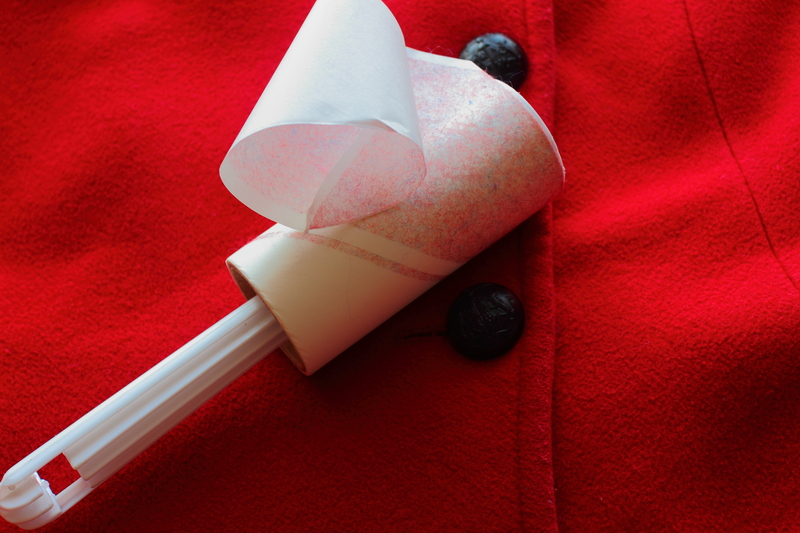Step-by-Step Guide to Vanquishing Damp Smells
Posted on 08/06/2025
Step-by-Step Guide to Vanquishing Damp Smells
Are you struggling with persistent damp odors in your home? Musty smells can infiltrate your living space, impact air quality, and make your home less inviting. Luckily, there are proven methods to tackle and eliminate damp smells for good. In this comprehensive guide, we'll walk you through the causes, solutions, and prevention tips, equipping you to restore fresh, clean air to your home.

Understanding the Source of Damp Odors
Before you can eradicate damp smells, it's essential to identify what's causing them. Musty odors often arise from excess moisture, leading to mold and mildew growth. Common sources include:
- Leaking pipes: Unseen leaks can saturate materials and foster dampness.
- Poor ventilation: Lack of airflow allows moisture to accumulate.
- Basements and crawl spaces: These areas are prone to humid conditions.
- Wet laundry: Leaving clothes damp in washing machines or in piles can create odor issues.
- Roof leaks: Water seeping through the roof can dampen insulation and walls.
Locating the origin is key to vanquishing damp smells in your house. Sometimes, you might need to investigate several spots before finding the culprit.
Step 1: Locate the Dampness
Check Common Problem Areas
Begin your search in areas susceptible to moisture:
- Basements, attics, and crawl spaces
- Kitchens and bathrooms, especially under sinks and around washing machines
- Behind furniture where air circulation is poor
- Inside closets or wardrobes on exterior facing walls
Use Your Senses
- Smell: Sniff out areas where musty odors are strongest.
- Sight: Look for visible mold, mildew spots, or water stains on walls and ceilings.
- Touch: Feel for dampness in carpets, floorboards, and fabrics.
If the problem seems severe or persistent, consider using a humidity meter or seeking professional help for a thorough inspection.
Step 2: Address and Remove the Source of Moisture
Repair Leaks
- Fix leaking pipes, faucets, or appliance hoses.
- Seal cracks in walls, floors, and around windows to block water ingress.
- Inspect roof and gutters to fix leaks or blockages.
Improve Ventilation
- Open windows and doors regularly to promote air flow.
- Install or upgrade exhaust fans in bathrooms and kitchens.
- Use dehumidifiers in problem areas to reduce moisture.
- Ventilate wardrobes and closets by leaving doors ajar.
Reducing overall humidity is crucial for eliminating damp odors permanently.
Step 3: Deep Clean Affected Areas
Clean Hard Surfaces
- Wash walls, floors, and tiles with a mixture of water and white vinegar (one part vinegar to two parts water) to neutralize moldy smells.
- Scrub grout and bathroom fixtures with a bleach solution to kill mold spores.
Launder Soft Furnishings
- Machine-wash curtains, cushion covers, and bed linens on a hot cycle where possible.
- Dry items thoroughly, preferably outdoors in direct sunlight, to eradicate moisture and lingering smells.
- If textiles cannot be cleaned at home, consider professional cleaning.
Deodorize Carpets and Upholstery
- Sprinkle baking soda over carpets and leave for several hours before vacuuming to absorb moisture and odors.
- Use carpet cleaners specifically designed to remove musty smells.
- Steam clean upholstery to eliminate entrenched odors.
Regular cleaning helps to maintain a fresh, odor-free environment.
Step 4: Kill Mold and Mildew
Natural Solutions
- White vinegar: Spray onto affected areas, leave for one hour, then wipe away.
- Baking soda: Combine with water to form a paste for scrubbing tiles and grout.
- Tea tree oil: Mix a teaspoon in a cup of water; spray on surfaces to deter mold.
Chemical Treatments
- Commercial mold removers can be highly effective.
- Always read and follow manufacturer instructions.
- Wear gloves and ensure good ventilation during use.
*Eliminating visible mold is essential for vanquishing musty odors at their core*.
Step 5: Absorb Lingering Damp Smells
Natural Odor Absorbers
- Place open containers of baking soda or activated charcoal in affected rooms -- these naturally attract odors and moisture.
- Use bowls of uncooked rice or cat litter to help absorb dampness from the air.
- Set out small dishes of white vinegar to neutralize strong musty smells.
Odor Eliminating Sprays and Diffusers
- Apply fabric-safe sprays to soft furnishings, rugs, and curtains.
- Use essential oil diffusers to freshen up spaces.
- Try homemade sprays with a mix of lemon juice and water for a clean scent.
Continue airing out the affected space daily until the odor completely dissipates.
Step 6: Prevent Damp Smells from Returning
Maintain Low Humidity
- Keep your home's humidity between 30-50% with dehumidifiers or air conditioning.
- Open bathroom windows or run fans during and after showers.
- Hang wet towels and laundry outside to dry whenever possible.
Promote Air Circulation
- Arrange furniture away from exterior walls to allow for airflow.
- Leave closet and cupboard doors slightly open in humid weather.
Regular Checks and Maintenance
- Inspect plumbing and roofing for leaks at least twice a year.
- Clear gutters and downspouts to prevent water buildup.
- Clean air vents, filters, and fans to ensure optimal performance.
*Consistent care and vigilance are the best ways to keep damp odors at bay and maintain a healthy, fresh-smelling home*.
Bonus Tips: Extra Steps for Stubborn Damp Odors
- Repaint problem areas with mold-resistant paint after cleaning and drying walls.
- Use calcium chloride moisture absorbers in closets or storage boxes.
- If damp persists, consult a professional damp-proofing service for long-term solutions.
Certain situations -- like rising damp or severe mold infestation -- may require expert intervention. Don't hesitate to seek assistance for health and safety.

Frequently Asked Questions About Vanquishing Damp Smells
How long does it take to get rid of musty odors?
Depending on the extent, small areas can be remedied in a day, while severe damp smells may take a week or more to fully disappear after thorough cleaning and drying.
Can air fresheners mask damp odors?
Air fresheners only provide temporary relief and do not address the underlying cause. Always find and remove the source of the moisture first.
Are damp smells dangerous?
Persistent dampness and musty odors can indicate mold growth, which may pose health risks. Addressing these smells promptly is crucial for a safe indoor environment.
Conclusion
Eradicating damp odors in your home is a multi-step process involving identification, cleaning, moisture control, and ongoing prevention. By following this detailed, step-by-step guide to vanquishing damp smells, you can restore crisp freshness to your living space and ensure comfort and health for your family. Regularly inspect your home, maintain good airflow, and tackle wetness promptly for a lasting solution.
For more home care wisdom and tips on eliminating musty smells, bookmark this guide and share it with anyone experiencing similar challenges. Your fresh, inviting home is just a few diligent steps away!



